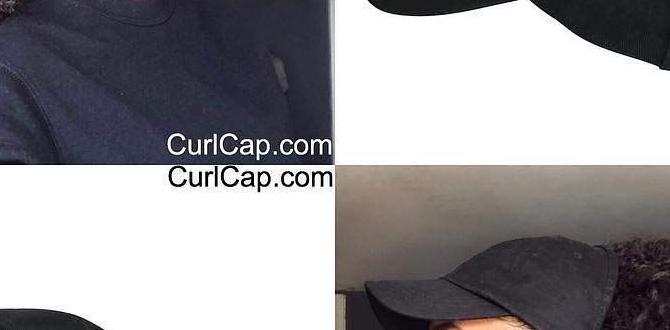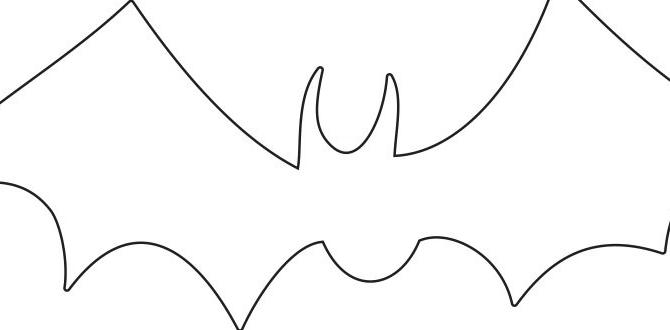Quick Summary: Choosing the right catchers shin guards for kids is crucial for protecting their shins, knees, and feet from foul balls and impact. Look for adjustable straps, proper padding, and a comfortable fit to ensure maximum safety and confidence behind the plate. This guide will help you make the best choice.
Catchers Shin Guards For Kids: Essential Protection for Young Ballplayers
As your young catcher steps up to the plate, their safety is paramount. One piece of equipment that often gets overlooked but is incredibly important is their shin guards. Foul balls can sting, and blocking pitches can be tough on those young legs. If you’ve ever wondered about the best way to protect your child behind the plate, you’re in the right place!
It can feel a little overwhelming trying to choose the right gear, especially when it comes to something as specific as shin guards. But don’t worry! We’re going to break down exactly what you need to know. From understanding what makes good shin guards to how they should fit, this guide will help you pick the perfect pair to keep your young player safe and playing their best.
Why Catcher Shin Guards Are a Must-Have
Catching in baseball is a demanding position. Beyond the physical exertion of squatting and throwing, catchers face a barrage of pitches, many of which can be wildly off-target. Foul tips that ricochet off the bat often head straight for their feet and shins. Without proper protection, these impacts can lead to bruising, scrapes, and even more serious injuries that could sideline a young player.
Shin guards act as a vital first line of defense. They absorb the impact of these errant balls, protecting the delicate bones and soft tissues from direct hits. This not only prevents immediate pain and injury but also helps build a catcher’s confidence. When a young player feels secure, they’re more likely to focus on their game, their technique, and their team, rather than worrying about getting hurt.
Key Features to Look For in Kids’ Shin Guards
Not all shin guards are created equal, and for kids, specific features are especially important. Here’s what to consider:
- Padding and Material: Look for guards with ample, high-density padding. This is usually made of EVA foam or similar materials designed to absorb shock. The outer shell should be durable plastic to deflect impacts.
- Coverage Area: The best shin guards will cover the entire shin and extend down to protect the top of the foot (the instep). Some also have knee caps that provide additional protection for the kneecap.
- Adjustability: Kids grow quickly, and their gear needs to keep up. Adjustable straps are a must. Look for Velcro straps that allow for a snug, secure fit that can be loosened or tightened as needed.
- Weight and Flexibility: While durable, the shin guards shouldn’t be so heavy or stiff that they hinder a young player’s mobility. They need to be able to move freely, bend their knees, and react quickly.
- Breathability: Catching can get hot! Look for guards with vents or breathable materials to help keep legs cooler and reduce sweat buildup.
Understanding the Different Types
While the core function of shin guards remains the same, you might encounter a couple of variations:
Full Leg Guards: These are the most comprehensive, typically extending from just below the knee down to the ankle, with integrated foot protection. They offer the highest level of protection and are the most common choice for catchers.
Shin Guards with Knee Caps: Some models integrate a protective knee cap alongside the shin and foot guards. This is an excellent option if your child is prone to knee impacts or you want that extra layer of safety.
Choosing the Right Size
Sizing shin guards correctly is vital for both protection and comfort. If they’re too small, they won’t cover the full area. If they’re too big, they can slip, which can be a safety hazard and a distraction. Here’s a simple guide:
Most manufacturers provide sizing charts based on height or leg length. It’s best to measure your child’s leg from the kneecap down to the top of their shoe or where they want the shin guard to end.
General Sizing Guidelines (Always check manufacturer specifics):
| Youth Size | Typical Height Range (Inches) | Shin Guard Length (Inches) |
|---|---|---|
| Small Youth | 3’6″ – 4’2″ | 12-14 |
| Medium Youth | 4’0″ – 4’8″ | 14-16 |
| Large Youth | 4’6″ – 5’2″ | 16-18 |
When trying on shin guards, have your child wear them with their cleats. They should feel snug but not restrictive. The straps should fasten comfortably, and there should be no major gaps in coverage.
How to Properly Fit and Adjust Catcher Shin Guards
Once you have the right size, proper fitting is key. This ensures maximum protection and comfort for your young catcher. Here’s a step-by-step approach:
- Put on the Cleats: Always have your child wear their baseball cleats when fitting shin guards. This helps ensure the guards align correctly with the foot and ankle.
- Position the Shin Guard: Place the guards on your child’s shins. The top of the guard should sit comfortably below the kneecap (or cover it if it’s a model with knee protection). The bottom should extend down to protect the top of the foot.
- Adjust the Straps – Bottom Up: Start with the lowest strap (usually around the ankle or lower shin). Tighten it enough so the guard feels secure but doesn’t pinch or restrict movement.
- Adjust the Straps – Middle and Top: Move to the middle strap and then the top strap. Adjust each one to create a snug, uniform fit. The goal is for the shin guard to stay in place without shifting, even when bending the knees.
- Check for Comfort and Mobility: Have your child practice squatting down and moving their legs. They should be able to do this comfortably without the guards digging in, slipping, or feeling overly bulky.
- Test Durability: Give the guards a gentle tug. They shouldn’t easily slide down or twist around the leg.
Remember, shin guards are designed to protect, not to be uncomfortable. A little adjustment can go a long way in ensuring your child feels confident and protected behind the plate.
The Importance of Maintaining Catcher Shin Guards
Like any piece of sports equipment, catcher shin guards benefit from proper care. This helps them last longer and maintain their protective qualities.
- Cleaning: After games or practices, wipe down the outside of the shin guards with a damp cloth to remove dirt and mud. For deeper cleaning, you can use mild soap and water, but avoid harsh chemicals that could degrade the plastic or padding.
- Drying: Always allow shin guards to air dry completely after cleaning or if they get wet from sweat. Do not put them in a dryer, as excessive heat can damage the materials.
- Inspection: Periodically check the shin guards for any signs of wear and tear. Look for cracks in the plastic, worn-out padding, or frayed straps. Damaged equipment should be replaced.
- Storage: Store shin guards in a cool, dry place. Avoid leaving them in a hot car or direct sunlight for extended periods, as this can warp the plastic. A gear bag is usually a good place for them.
Beyond Shin Guards: A Catcher’s Full Protective Gear
While shin guards are essential, they are just one part of a catcher’s protective kit. To ensure your young player is fully protected, consider the following:
- Catcher’s Helmet/Mask: This protects the face, head, and throat. It’s arguably the most critical piece of catcher’s gear.
- Catcher’s Chest Protector: This guards the torso against foul balls and collisions, helping to prevent bruises and serious injuries to the ribs and chest.
- Catcher’s Mitt: A specialized glove designed for catching fast pitches, often more padded than a fielder’s glove.
- Throat Protector: Some masks have an attached throat protector, or a separate one can be added for extra protection to the throat and neck area.
A complete set of well-fitting gear significantly reduces the risk of injury and allows young players to focus on developing their skills and enjoying the game. For more information on baseball safety standards, you can refer to resources like the Little League Equipment Safety Standards.
Common Questions About Kids’ Catcher Shin Guards
Q1: How do I know if my child’s shin guards are too tight?
If the shin guards are causing red marks on your child’s legs that don’t fade quickly, or if they complain of pinching or discomfort after a short period, they are likely too tight. Also, check if the straps are digging into their skin.
Q2: Can kids wear shin guards for positions other than catcher?
While primarily designed for catchers, some players in other positions might wear shin guards for extra protection, especially in youth leagues where a fast pitch can be unpredictable. However, they are most essential for the catcher.
Q3: What is the best material for shin guard padding?
High-density EVA foam and similar impact-absorbing materials are generally considered the best for shin guard padding. They provide a good balance of shock absorption and durability without adding excessive bulk.
Q4: How often should I replace my child’s shin guards?
Shin guards should be replaced when they show signs of significant wear and tear, such as cracks in the plastic, compressed or flattened padding, or damaged straps that can no longer provide a secure fit. If they’ve been outgrown, that’s another reason to replace them.
Q5: Do shin guards affect a catcher’s speed or agility?
Well-fitting shin guards, especially lighter youth models, should not significantly impede a catcher’s speed or agility. Their primary purpose is protection, but modern designs aim to be as unobtrusive as possible. If they feel overly restrictive, it might indicate a poor fit or a design that is too bulky.
Q6: Are there specific regulations for youth catcher shin guards?
Major youth baseball organizations like Little League and Cal Ripken have general safety equipment requirements, but often don’t specify exact dimensions or types of shin guards beyond general protection. The focus is usually on ensuring adequate coverage and secure fitting. Always check the specific rules of your league or tournament.
Conclusion: Protecting the Future of the Game
As your young ballplayer embraces the challenging and rewarding role of catcher, providing them with the right protective gear is non-negotiable. Catchers shin guards for kids are more than just an accessory; they are a critical component of safety, allowing young athletes to perform with confidence and focus.
By understanding the key features, correct sizing, and proper fitting techniques, you can ensure your child has the best protection available. Remember to inspect their gear regularly and keep it clean, just like the rest of their equipment. Investing in quality shin guards is an investment in your child’s safety, their enjoyment of the game, and their development as a player. Keep them protected, keep them playing, and watch them grow!




